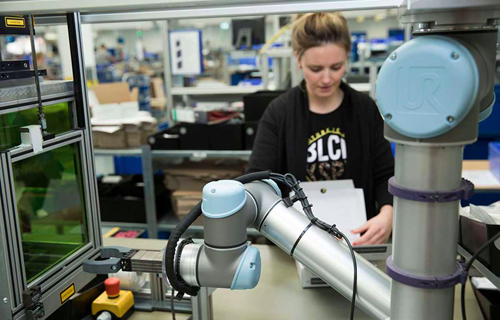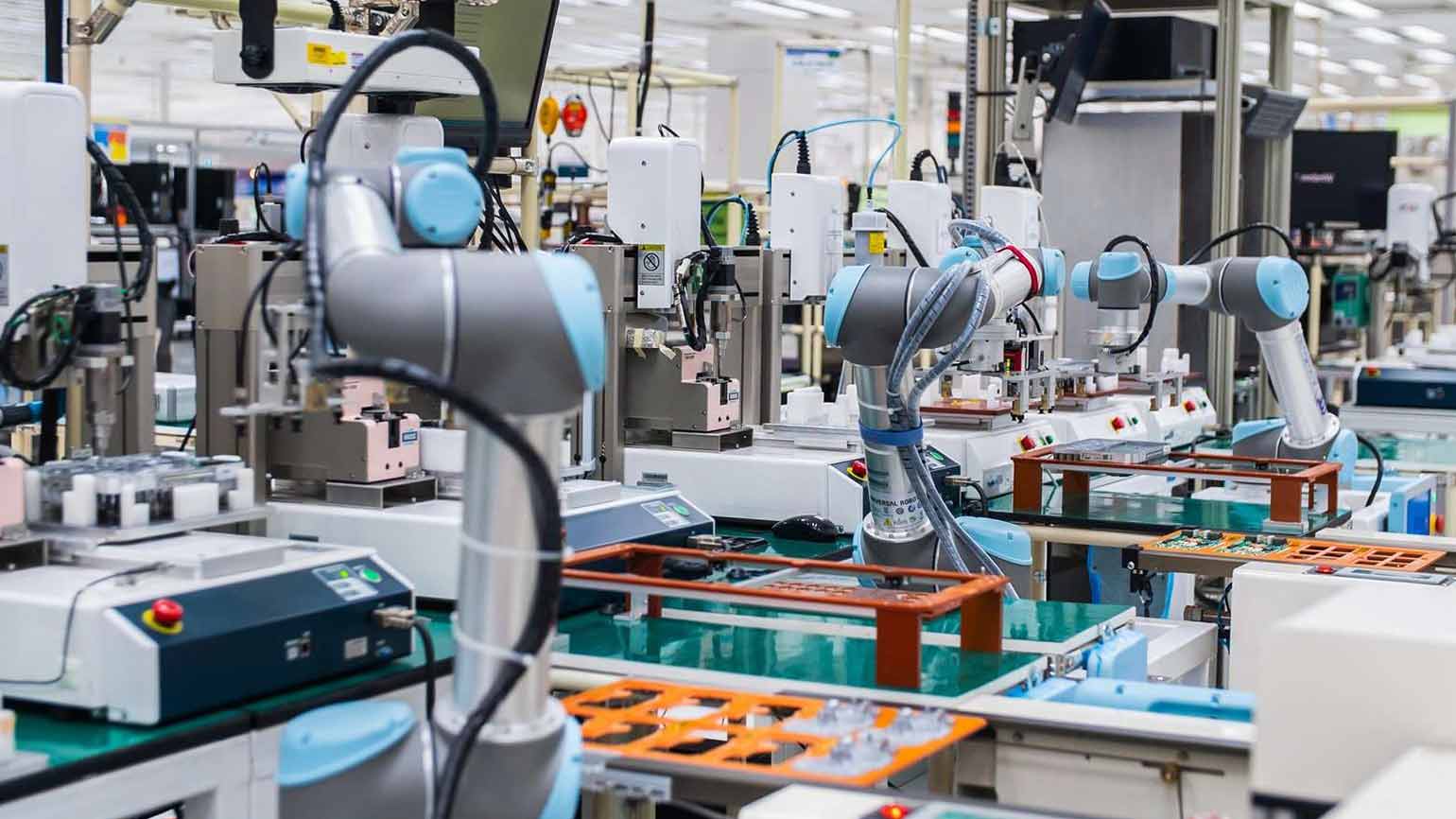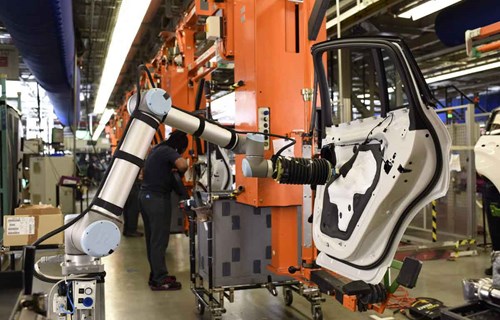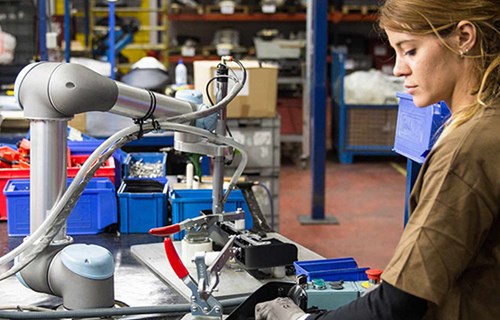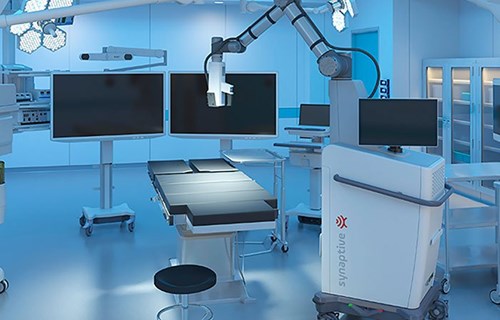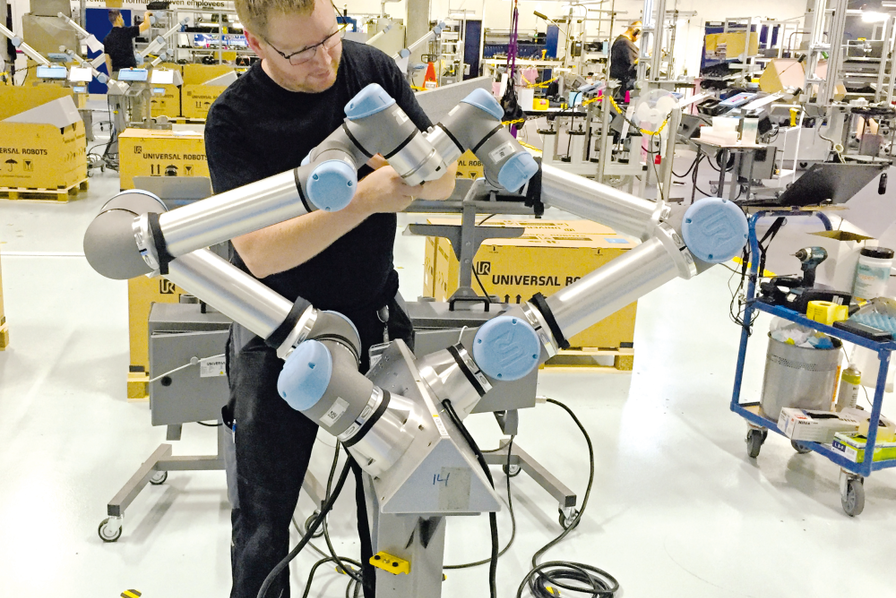Collaborative robotics in Quebec: a growing technology
Collaborative robotics, also known as cobotics, enables robots to work alongside human workers to improve productivity, quality, safety and competitiveness. Collaborative robotics is a rapidly developing technology worldwide, and Quebec is no exception.
Quebec has a booming robotics ecosystem, with several research and innovation centers, such as the Centre de recherche industrielle du Québec (CRIQ), working with companies to develop tailor-made collaborative robotics solutions. The benefits of collaborative robotics are numerous, ranging fromimproved quality of work to reduced costs and fewer workplace accidents.
The use of collaborative robots in Quebec

According to Statistics Canada data, in 2020 there were around 1,500 manufacturing companies in Quebec, of which around 10% reported using collaborative robots. Of these, the majority are small and medium-sized enterprises (SMEs) with fewer than 100 employees. This growing adoption of collaborative robotics is largely due to the benefits it offers companies, such as improved quality, increased productivity and lower costs.
The benefits of collaborative robotics for businesses
One of the main benefits of collaborative robotics is its ability to improve business productivity. Collaborative robots are able to work faster and more efficiently than human workers, reducing downtime and increasing production. Collaborative robots can work 24/7, enabling companies to operate more efficiently and respond to customer requests more quickly. This enables companies to increase their productivity.

What's more, collaborative robots can perform repetitive, monotonous tasks without tiring, which can improve the quality of work and reduce errors, as well as enabling workers to concentrate on more complex, high-value-added tasks.

Finally, collaborative robotics can help companies cut costs. Although the initial investment in collaborative robotics is significant, collaborative robots can help cut costs in the long term by reducing labor costs, improving work quality and reducing downtime. Collaborative robots are generally less expensive than traditional robots, as they are designed to work alongside human workers rather than replace them.

The use of collaborative robotics also raises questions about employment and worker safety. Some people fear that automation will lead to job losses. However, companies that have adopted collaborative robotics have found that the technology has actually created jobs in areas such as robot programming and maintenance.

When it comes to safety, collaborative robots are designed to work safely alongside humans. These robots are equipped with safety sensors that detect the presence of workers and stop automatically in the event of danger.
Industries using collaborative robotics in Québec
According to data from the Association pour le développement de la recherche et de l'innovation du Québec (ADRIQ), here are some of the key industries using collaborative robotics in Quebec:
- Aerospace: Quebec's aerospace industry uses collaborative robotics for tasks such as aircraft assembly and inspection. Collaborative robots can perform complex tasks with great precision, reducing downtime and improving quality.
2. Automotive parts manufacturing: the automotive industry in Quebec also uses collaborative robotics for tasks such as welding, assembly and parts inspection. Collaborative robots are able to work quickly and with great precision, reducing production costs and improving quality.
3. Food processing: Quebec's food processing industry uses collaborative robotics for tasks such as sorting, packaging and processing food. Collaborative robots are able to work with sensitive food products while guaranteeing food safety and improving quality.
4. Electronics manufacturing: the electronics manufacturing industry in Quebec uses collaborative robotics for tasks such as assembly and handling of electronic components. Collaborative robots are able to work with fragile electronic components while guaranteeing high precision and quality.
5. Healthcare: the healthcare industry in Quebec uses collaborative robotics for tasks such as robot-assisted surgery and physical rehabilitation. Collaborative robots can help healthcare professionals perform complex tasks with great precision, which can improve patient outcomes.
In addition to these industries, many others in Quebec are using collaborative robotics to improve their productivity and competitiveness. Collaborative robots are also used in fields such as education, research and development, and logistics. Collaborative robotics is a versatile technology that can be used in a variety of contexts to improve processes and outcomes.
In conclusion, collaborative robotics is a fast-growing technology in Quebec, offering many benefits to businesses, including improved productivity, quality of work and reduced costs. In short, collaborative robotics has a promising future in the Quebec robotics ecosystem.
Would you like to know more?
Address
100 Goyer Street, room 103
La Prairie (QC)
J5R 5G5
info@pneumac.qc.ca

